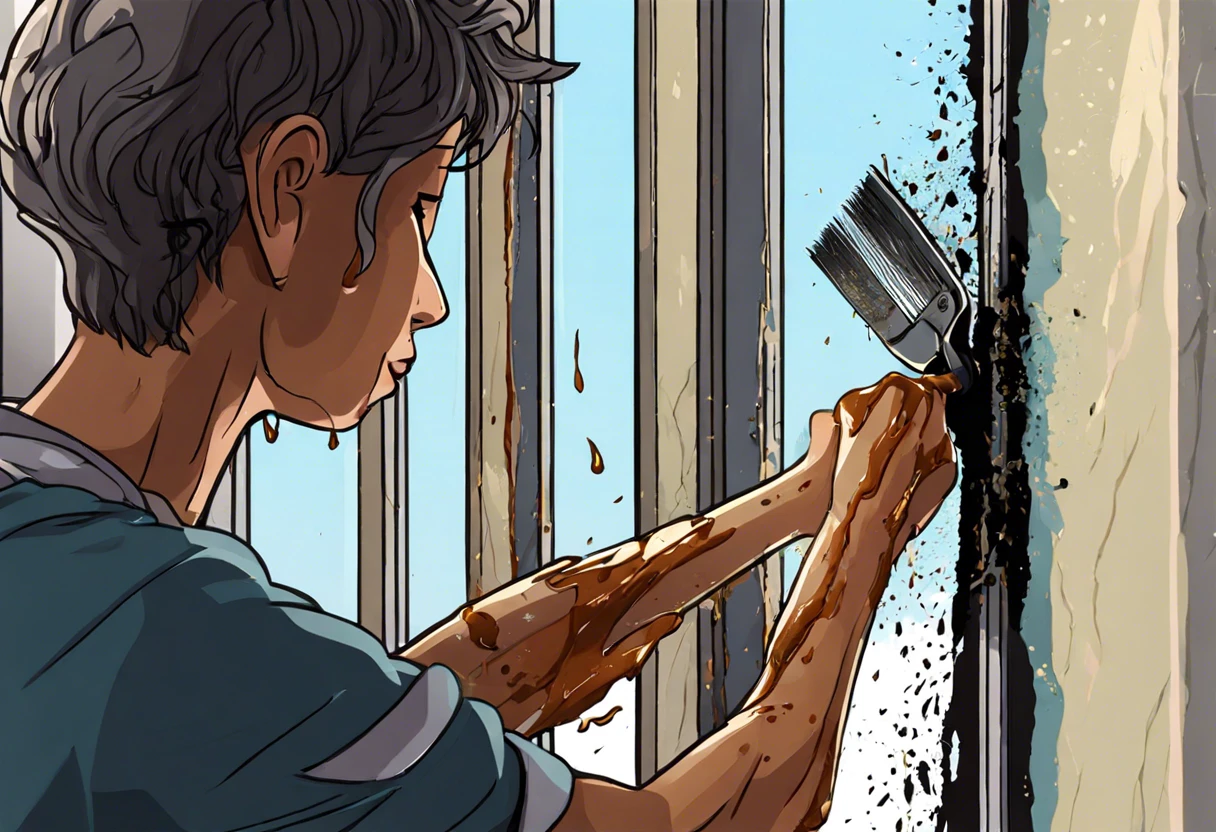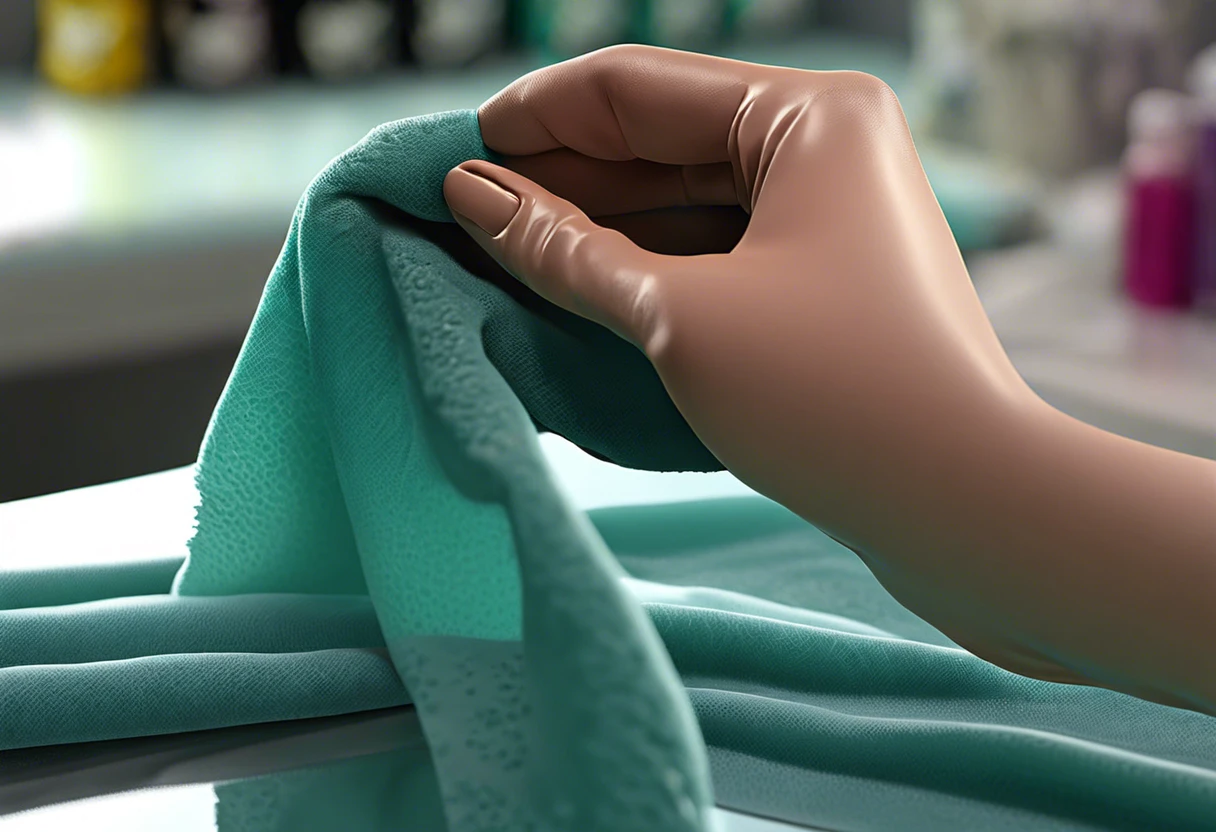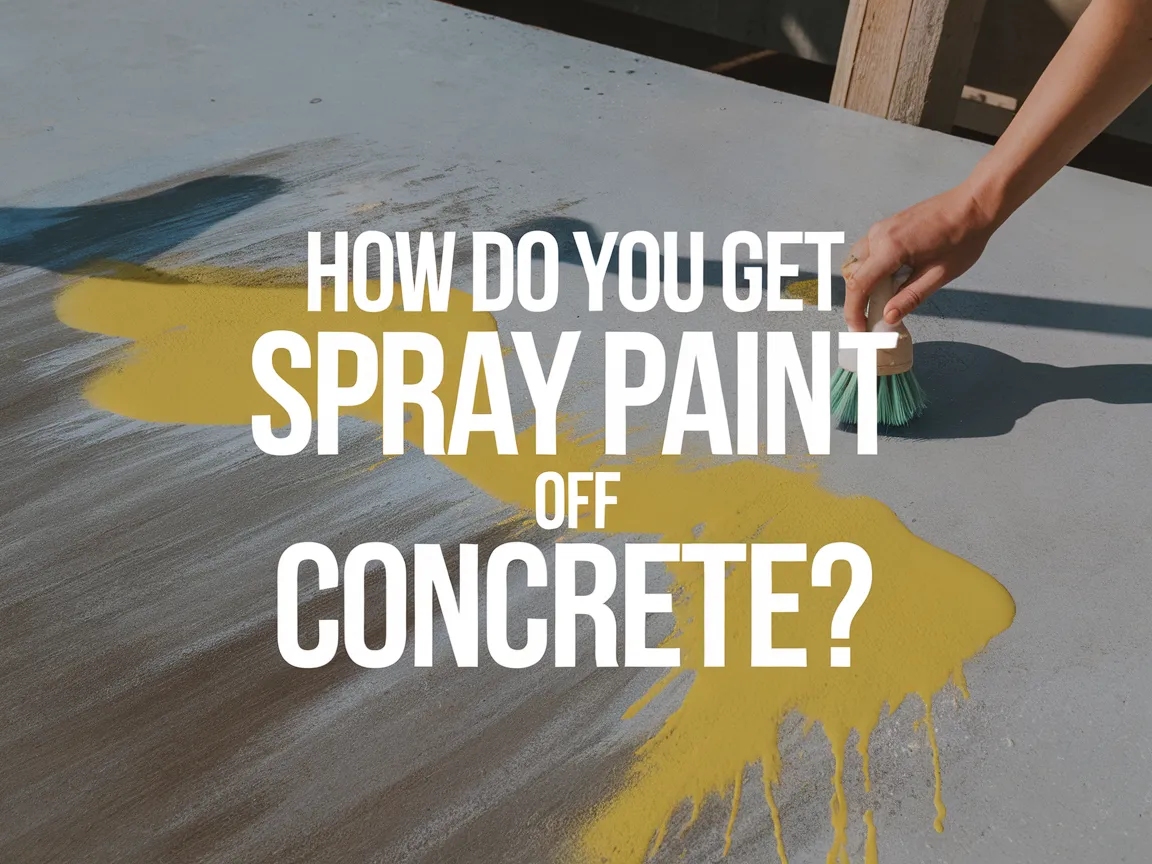How Do You Get Paint Off Glass?
Published on: October 9, 2025 | Last Updated: October 19, 2025
Written By: Alisha Winters
Glass is a shiny, hard material. Think of it as a see-through wall that can sparkle in the sunlight!
So, how do you get paint off glass? It’s crucial because you want your glass to look new again. I remember when I tried to clean my painted windows; it felt like a big mess, but I learned a lot!
In this guide, you’ll discover essential preparations before starting, a step-by-step paint removal process, tips on color choices for restoration, and common issues you might face. You’ll find out how the type of paint matters, and you’ll even get creative DIY ideas like how to paint glass with acrylic paint.
Contents
- 1 How Do You Get Paint Off Glass?
- 2 What is Glass Material?
- 3 Essential Preparations Before You Start
- 4 Step-by-step Guide to Removing Paint From Glass
- 5 Types Of Paint and Their Impact on Glass Removal
- 6 Understanding the Paint Removal Process: Key Considerations
- 7 Comparing Effectiveness of Various Paint Removal Techniques
- 8 Cost Analysis of Paint Removal Options
- 9 Factors Affecting the Success Of Paint Removal on Glass
- 10 Common Issues When Removing Paint From Glass
- 11 Finishing Touches for a Clean Glass Surface
- 12 Essential Techniques for Effective Paint Removal
- 13 Paint Removal Timing and Tips
- 14 Understanding Paint Adhesion on Glass
- 15 Frequently Asked Questions About Removing Paint From Glass
- 16 Conclusion
- 17 Useful Resources
How Do You Get Paint Off Glass?
To clean paint off glass, use a razor blade or scraper. Gently scrape the paint away, holding it at a 45-degree angle. For stubborn spots, apply rubbing alcohol or vinegar to loosen it. Finally, wipe the glass clean with a cloth. If you’re working with specialized paint finishes, you might want to explore ceramic coating techniques for protection.
The Finishing Touch
A freshly painted wall is a blank canvas. The best way to bring your room to life is with a single piece of statement art that ties everything together.
Browse Wall Art at Big Wall DecorWhat is Glass Material?
Glass is a solid material made from silica (Sio2), often mixed with sodium (Na2o) or calcium (Cao). It’s typically amorphous, meaning it has a disordered structure, and can be formed by melting and cooling at temperatures up to 1,700°C (3,092°F). Glass materials can be transformed through various manufacturing processes that involve precise temperature control and specialized techniques.
If you’re wondering how to remove paint from glass, I’ve faced that challenge myself. For instance, I struggled with a painted window in my home; it was a mix of frustration and creativity!
A friend of mine relied on intuition to restore that charming vintage glass. Learning how to access her painted windows opened my eyes to the importance of keeping glass surfaces clean. Plus, handling paint disasters taught me that knowing the right techniques can make all the difference. When working with automotive finishes, selecting the perfect primer for silver paint becomes crucial for achieving a flawless result.
Essential Preparations Before You Start
What do you need to get started?
- Paint Stripper: You’ll need a reliable product like Citristrip Strip-Of Paint Remover. It effectively dissolves tough paint on glass surfaces.
- Protective Gear: Use gloves, such as Atlas 370 Nitrile Gloves, to protect your hands from chemicals during the process.
- Razor Scraper: Look for a sturdy scraper like the Hdih7 Razor Blades Scraper. It’s great for scraping off stubborn paint.
- Rubbing Alcohol: Get isopropyl alcohol with around 70% concentration. It’s useful for cleaning any remaining residue after paint removal.
We’ve wrapped up the crucial preparations you need to consider. Let us turn our attention to the step-by-step guide for removing paint from glass.
Also See: Can You Recycle Cardboard With Paint on It? Find Out!

The Finishing Touch
A freshly painted wall is a blank canvas. The best way to bring your room to life is with a single piece of statement art that ties everything together.
Browse Wall Art at Big Wall DecorStep-by-step Guide to Removing Paint From Glass
Here are the steps to effectively remove paint from glass surfaces.
-
Choose the Right Cleaning Method
Decide if you’re using a solvent like acetone or a natural option like vinegar. Solvents work faster but may be harsher on some surfaces.
Vinegar is less aggressive but may require more applications. It’s easier on the environment, so consider what fits your situation best.
-
Apply Solvent to the Paint
Soak a cloth in your chosen solvent, then press it against the paint for 10-15 minutes. This soaking helps the solvent break the paint’s bond with the glass.
Cover only the painted area; avoid overly moistening surrounding parts. Letting it sit is key—patience makes it easier!
-
Scrape Off the Paint
Gently use a razor blade or glass scraper to remove the softened paint. Hold the blade at a 30-degree angle to reduce scratches while getting as much paint as possible.
I’ve been down this road before, and patience matters. Take your time; rushing may scratch that beautiful glass underneath!
-
Clean the Glass Thoroughly
After scraping off the stubborn paint, clean the glass with warm, soapy water to remove any leftover residue. Don’t forget the corners—paint can sneak in there.
For extra shine, follow up with glass cleaner or vinegar. Caring for your glass gives a magnificent final touch!
That covers the process of removing paint from glass. Let’s now take a look at paint types and their effects on removal.
Types Of Paint and Their Impact on Glass Removal
Let’s discuss the types of paint: acrylic, latex, oil-based, and spray paint.
-
Acrylic Paint
Acrylic paint is water-based and dries quickly, usually within 30 minutes to an hour. To remove paint from glass, use soapy water or rubbing alcohol, as it breaks down easily.
-
Latex Paint
Latex paint is another water-based option known for its flexibility and low odor. To remove it from glass, a little vinegar or glass cleaner works well since it softens the paint without harsh chemicals. If you’re looking to explore more painting techniques beyond basic surface cleaning, you might want to check out how to master watercolor painting techniques.
-
Oil-based Paint
Oil-based paint takes longer to dry—up to 24 hours—and has a strong smell. You’ll need paint thinner or mineral spirits to strip it from glass effectively.
-
Spray Paint
Spray paint is known for its even coating and quick application. Removing it from glass can be trickier; you might need a razor blade and acetone to tackle tough spots.
From my experience, acrylic paint is my go-to for projects due to its bright colors and easy cleanup. Just a little soap and water does the trick!
That covers the types of paint and their effects on glass removal. Let’s now take a look at important aspects of the paint removal process.
Understanding the Paint Removal Process: Key Considerations
Let’s dive deeper into the aspects that make the paint removal process successful.
- Temperature: Warmer temperatures can help softening paint. Aim for around 21-27°C (70-80°F) for best results.
- Humidity: High humidity can slow drying paint but may also work in your favor by making it easier to remove. Experiment to find your sweet spot!
- Glass Type: Different glass surfaces react differently. Tempered glass resists scratches better but may be more fragile during intense scraping.
We have now covered the paint removal process and important considerations. The next section will compare the effectiveness of different techniques.

Comparing Effectiveness of Various Paint Removal Techniques
Which methods work best for you? Here’s a comparison of popular techniques.
| Method | Effectiveness | Time Required | Ease of Use |
|---|---|---|---|
| Razor Scraper | Highly Effective | 15-30 Minutes | Moderate (Needs Care) |
| Vinegar | Effective for Water-Based Paints | 30-60 Minutes | Easy |
| Commercial Stripper | Highly Effective | 10-20 Minutes | Easy (Follow Instructions) |
| Heat Gun | Effective for Thick Layers | 20-40 Minutes | Requires Caution |
Cost Analysis of Paint Removal Options
Curious about the costs? Here’s a quick breakdown.
| Option | Cost Range (USD) | Longevity (Use) |
|---|---|---|
| Razor Blades | $5-$20 | Multiple Uses |
| Vinegar | $2-$5 | Single Use |
| Paint Stripper | $10-$30 | Multiple Uses |
| Commercial Products (e.g., Goo Gone) | $5-$15 | One-Time Use |
Factors Affecting the Success Of Paint Removal on Glass
What factors influence your paint removal strategy for glass surfaces?
-
Type of Paint: Acrylic paint is usually easier to remove than oil-based paint.
-
Application Method: Spray paint may create a thicker layer, complicating removal.
-
Drying Time: The longer paint sits, the harder it bonds, making removal tougher.
-
Tools and Solvents: Using inadequate tools can lead to inefficient paint removal.
Common Issues When Removing Paint From Glass
My friend tried a razor blade, but it slipped and scratched the glass. That was a close call!
The Finishing Touch
A freshly painted wall is a blank canvas. The best way to bring your room to life is with a single piece of statement art that ties everything together.
Browse Wall Art at Big Wall DecorTo fix this, use a plastic scraper instead. It’s safer and removes paint without scratching. Also, heat the paint with a hairdryer (Around 50°C or 122°F) to loosen it first. It’s easy!
Finishing Touches for a Clean Glass Surface
After removing paint, clean the glass with isopropyl alcohol (60-75%). Wipe it down with a lint-free cloth to avoid scratches. Your glass will shine like new!
Inspection starts by checking for minor defects. Use a magnifying glass to look for paint residue or scratches, focusing on edges and corners. Check carefully for any missed spots.
I recommend Armor All Glass Wipes for last-minute polishing. They’re quick and effective, giving your glass that final sparkle!
For advanced tips, rinse with distilled water after using chemicals. This reduces impurities and prevents streaks. You’ll keep your glass perfectly clear!
Essential Techniques for Effective Paint Removal
Mastering a few techniques can boost your efficiency when removing paint from glass.
- Heating: Apply heat using a hairdryer. Keep it around 50°C (122°F) to soften the paint. This makes scraping easier without damage!
- Soaking with Oils: Try using vegetable oil for stubborn spots. Let it sit for 15 minutes to break paint bonds. It’s a gentle option that works!
- Steam Method: Boil water and hold the glass in the steam. It softens paint, making it easier to scrape off afterward. Just don’t burn yourself!
Paint Removal Timing and Tips
Timing can make or break your paint removal process. Here are tips on when and how to act:
| Timing | Method | Recommended Duration |
|---|---|---|
| Immediately After Painting | Wipe with a damp cloth | Within 1 hour |
| After 24 Hours | Use vinegar or paint remover | 10-15 minutes soak |
| Stubborn Paint (Years Old) | Apply heat and scrape gently | 15-30 minutes |
Understanding Paint Adhesion on Glass
Why does paint stick so well? Understanding adhesion can help you tackle tough spots!
- Surface Texture: Smooth glass has lower adhesion compared to rough surfaces. Always aim to work on well-prepared glass.
- Type of Paint: Water-based paints tend to peel off easier than oil-based. This might dictate your approach.
- Environmental Factors: Humidity and temperature can influence the paint curing process. Higher humidity may allow for easier removal.
Also See: Can You Paint PVC? Tips for Your Projects!
Frequently Asked Questions About Removing Paint From Glass
What Tools Do I Need to Remove Paint From Glass?
You need specific tools to effectively remove paint from glass. Use a razor blade, vinegar, or a paint remover designed for glass. For best results, ensure tools are safe for the surface to avoid scratches.
Can Vinegar Remove Paint From Glass?
Yes, vinegar can remove paint from glass. Its acetic acid helps to break down paint, especially latex, making it easier to scrape off. Use a solution of equal parts vinegar and warm water for a gentler approach. When selecting the right method for paint removal, you might want to explore additional techniques for choosing foundation paint colors.
Is It Safe to Use a Heat Gun on Glass?
No, it’s not safe to use a heat gun on glass. Glass can shatter due to uneven heating if it exceeds temperatures above 260°C (500°F). Instead, opt for milder methods to prevent damage.
What Types Of Paint Are Hardest to Remove From Glass?
Oil-based paints are the hardest to remove from glass. They adhere more aggressively and often require chemical solvents. Water-based paints are easier as they typically lift off with soap and water. If you’re curious about professional painting techniques that minimize such challenges, check out famous painting methods.
How Can I Prevent Paint From Getting on Glass in the Future?
You can prevent paint from getting on glass by using painter’s tape. Also, consider covering windows with plastic sheeting when painting nearby. This method saves time and effort on cleanup.
How Do I Know if the Paint on Glass is Removable?
You can determine if paint on glass is removable by checking the type. Water-based paint usually comes off easily, while oil-based paint can require more aggressive methods. Test a small area first. When working with different paint types, it’s crucial to know the right canvas preparation techniques.
What Are the Best Commercial Products for Removing Paint From Glass?
The best commercial products for removing paint from glass include Goo Gone and Citristrip. These products are designed specifically for paint removal and generally work safely and effectively on glass surfaces. If you’re wondering about alternative painting techniques, you might want to explore painting strategies for different surfaces.
Conclusion
That’s everything I wanted to share with you. We covered essential preparations, a step-by-step guide, factors affecting success, common issues, finishing touches, recommended color palettes for glass projects, and creative DIY ideas.
So, how do you get paint off glass? Use items like paint strippers, razor blades, and vinegar, while considering paint types and techniques, to achieve a clean surface. The process is straightforward but demands patience and care.
For additional insights and tips, check out Paint Answers.
Useful Resources
- Gurney, J. (2009). Color and Light: A Guide for the Realist Painter. Kansas City, MO: Andrews McMeel Publishing.
Experienced interior designer with 15+ years in transforming spaces, blending artistry with expertise in color and design. Rhode Island School of Design graduate, specializing in restorations and modern makeovers.
Glass, Material









